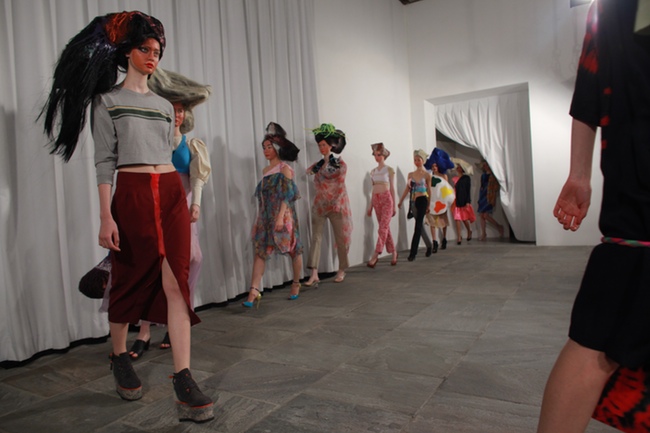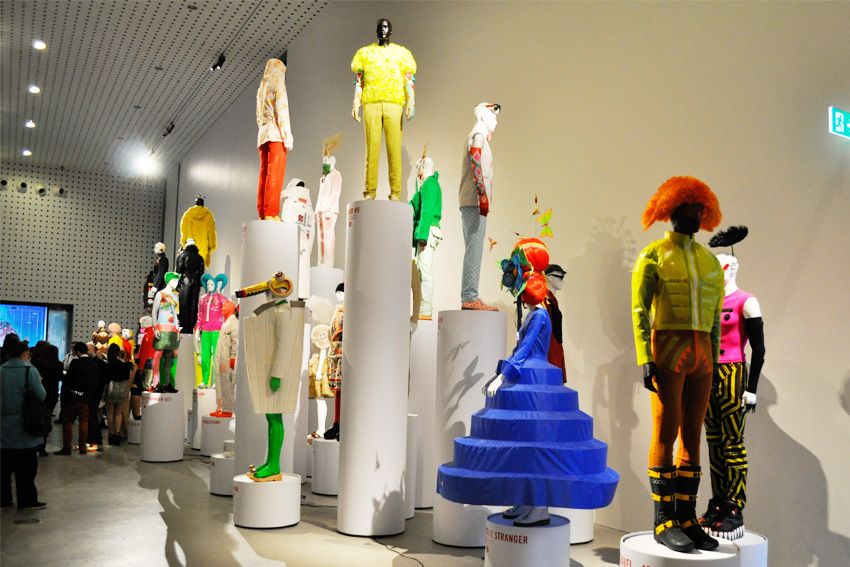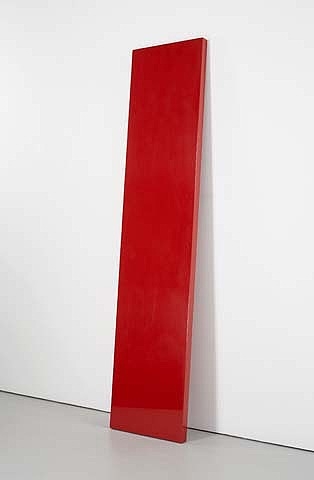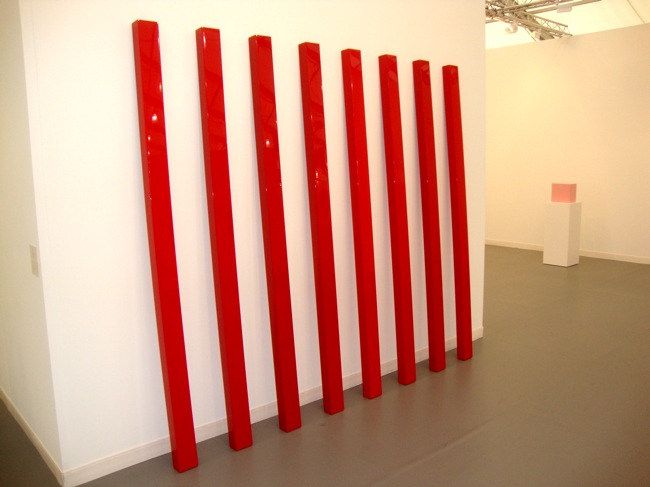Born in Pantin, Seine-Saint-Denis, Falconetti became a stage actress in Paris in 1918. By the time Dreyer watched her act in an amateur theater and selected her as his leading lady in his upcoming production La Passion de Jeanne d'Arc, she was already a celebrated stage artiste, and had appeared in one film, La Comtesse de Somerive (1917), directed by Georges Denola and Jean Kemm. Falconetti was 35 years old when she played the role of 19-year-old Joan of Arc in La Passion. Her portrayal is widely considered one of the most astonishing performances ever committed to film, and it would remain her final cinematic role.
Many writers have claimed that Falconetti's performance was the result of extreme cruelty at the hands of Dreyer, a notoriously demanding director who pushed her to the brink of emotional collapse. For example, film critic Roger Ebert writes,
For Falconetti, the performance was an ordeal. Legends from the set tell of Dreyer forcing her to kneel painfully on stone and then wipe all expression from her face – so that the viewer would read suppressed or inner pain. He filmed the same shots again and again, hoping that in the editing room he could find exactly the right nuance in her facial expression.However, in their biography of Dreyer, Jean and Dale Drum say that these stories are based only on rumour and that "there is no evidence that Dreyer could be called a sadist". They quote onlookers who described Dreyer's working relationship with Falconetti: initially in the production process, "Dreyer and Falconetti would watch the rushes of a single scene together, seven or eight times, until Dreyer could pick out a little bit, maybe a few feet, where the effect was what they wanted, and when they reshot the scene, she could play it without the least inhibition. Just those few feet of film had inspired her." Later, Falconetti became able to play scenes only from Dreyer's explanations, without the need even for rehearsal.
http://en.wikipedia.org/wiki/Ren%C3%A9e_Jeanne_Falconetti
'Jesus!' The last word we hear from her or read from her in The Passion of Joan of Arc, her last word to the world of today as she leaves the big screen and re-enters the nocturnal shadows of the past. Stepping from a dreamhouse in flames down into mortality; stepping from the present into the past. An unforgettable sight. An unforgettable scene.
Before and after Dreyer she was a stage comedienne. As far away from what we remember her for as night is from day. But from her mid-20s she could be found on the stage in Paris. By the time Dreyer witnessed her on stage she had a kind of fame - the kind I mean is the one found from word of mouth, from the printed word, the types of communiction that existed before mass media and the TV camera shrunk our world. Thus some would know her from an article and/or picture in a newspaper, from voices in the corner coming from that magical box of tricks called the radio, from a friend telling you about seeing her last night in a play and raving about her. A figure with a natural distance from her admirers. In other words she still retained a level of mystery, an impenetrability that has served her icon well.
She was 35 when she made the film; Joan of Arc was 19. Yet this was a masterstroke. Her face is young enough to convey the innocence of Joan but old enough to depict Death lurking in every shadow, in every word her inquisitors torment her with. Her eyes know it is there; that soon it will have her but it is her innocence that makes her stronger than the strongest of her tormentors. For she believes in her beliefs and there is no-one among her who conveys that strength.
Every emotion, every thought, is etched in her face and amplified by the camera. I haven't seen one performance on screen that is half as strong, half as moving or half as beautiful. The terrors of Joan of Arc, the terrors of a Saint, are captured forever on film. Who can not be moved by what she went through? Those with hearts of stone, I guess.Paul Page
http://www.leninimports.com/renee_maria_falconetti_11a.html#jcmore
You cannot know the history of silent film unless you know the face of Renee Maria Falconetti. In a medium without words, where the filmmakers believed that the camera captured the essence of characters through their faces, to see Falconetti in Dreyer's "The Passion of Joan of Arc” (1928) is to look into eyes that will never leave you.
Falconetti (as she is always called) made only this single movie. "It may be the finest performance ever recorded on film,” wrote Pauline Kael. She was an actress in Paris when she was seen on the stage of a little boulevard theater by Carl Theodor Dreyer (1889-1968), the Dane who was one of the greatest early directors. It was a light comedy, he recalled, but there was something in her face that struck him: "There was a soul behind that facade.” He did screen tests without makeup, and found what he sought, a woman who embodied simplicity, character and suffering.
Perhaps it helps that Falconetti never made another movie (she died in Buenos Aires, Argentina, in 1946). We do not have her face in other roles to compare with her face here, and the movie seems to exist outside time (the French director Jean Cocteau famously said it played like "an historical document from an era in which the cinema didn't exist”).
Roger Ebert
http://www.rogerebert.com/reviews/great-movie-the-passion-of-joan-of-arc-1928
One article I’m especially proud of appeared a little over 50 years ago - in December of 1962. It was published in Pageant magazine (long since gone), and was about an obscure actress named Falconetti, who had played in a 1927 silent film, “The Passion of Joan of Arc,” directed by the Danish master Carl Dreyer.
My article began: “This is the story of an actress you probably never heard of, probably never saw, and probably will never get to see.” Yet she is worth remembering “because she gave one of the greatest performances in the history of motion pictures - perhaps the very greatest.”
When I asked the New School instructor about her, he said: She was a mystery. No one knows anything about her.
At the time I was working for Pageant magazine, a small, low-circulation magazine, and I asked the editor, Howard Cohn, if I could write an article about this magnificent but mysterious actress, Maria Falconetti. He said yes - if I could find out where she came from and what happened to her.
I did library research. I corresponded with movie critics. I exchanged letters with Carl Dreyer, the director, in Denmark. Dreyer wrote that he had seen her in Paris, on the stage, and knew she would be right for the part. But, along with everyone else, he knew almost nothing about her.
What made my research frustrating was that there was plenty of information about another actress, Renée Falconetti, a good-looking young woman, the youngest actress ever to have joined the Comedie francaise. She had died some years ago, in South America. The theater division of the New York Public Library had a thick folder of material on Renée, but almost nothing on Maria.
I was ready to give up.
In desperation, I consulted a Paris phone book and wrote to all the Falconettis in Paris…. Did they know anything about the actress Maria Falconetti?
Months went by. And a letter from Paris finally arrived. From Helene Falconetti, a lawyer who said she was the daughter of the Falconetti who had starred in “The Passion of Joan of Arc.”
She began her letter by asking, why did I refer to her mother as Maria? When her name was Renée?
I stared at the letter. It took a while for me to comprehend. There was no Maria Falconetti. There was only Renée Falconetti….
I wrote and published my article…. And the New York Public Library theater division (after giving me a little trouble) finally combined its folders on Renée and Maria Falconetti.
Today, if you look up “Falconetti” in Wikipedia, you will see that the first footnote credits me as the source that Falconetti’s true name was not Maria Falconetti, but Renée Jeanne Falconetti.
And if you want to see an astonishing performance by an actress in an utterly amazing film, see “The Passion of Joan of Arc” as soon as you can.
Warren Boroson
http://www.newjerseynewsroom.com/movies/a-great-hollywood-story-the-mesmerizing-a-mysterious-falconetti-who-dazzled-in-the-passion-of-joan-of-arc

































































